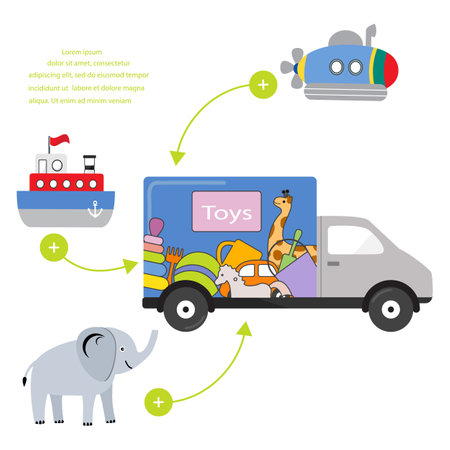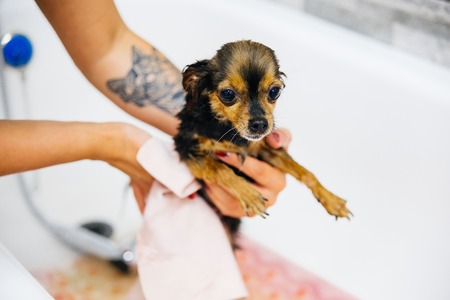1. Choosing the Right Travel Carrier
When transporting your exotic pet, selecting the right carrier is crucial for their safety and comfort. The ideal travel carrier should be secure, well-ventilated, and appropriately sized for your pet’s species and needs. Here’s how to choose the best one:
Consider Your Pet’s Size and Species
Different exotic pets have different requirements when it comes to travel carriers. A reptile may need a warm, enclosed space, while a bird requires proper ventilation and perch support.
| Pet Type | Recommended Carrier Features |
|---|---|
| Reptiles (snakes, lizards, turtles) | Secure lid, insulated sides for temperature control, escape-proof design |
| Birds (parrots, finches) | Cage-style carrier with sturdy perches, breathable mesh or bars, secure door |
| Small Mammals (ferrets, rabbits) | Padded bottom, well-ventilated sides, chew-resistant material |
| Aquatic Pets (fish, amphibians) | Leak-proof container with stable water temperature maintenance |
Selecting the Right Material
The material of the carrier matters for durability and ease of cleaning. Here are some common options:
- Plastic Carriers: Sturdy and easy to clean but may lack ventilation.
- Fabric Soft Carriers: Comfortable and lightweight but not suitable for pets that chew.
- Acrylic or Glass Containers: Ideal for aquatic pets but require careful handling.
- Wire Cages: Great for birds but must have a secure locking mechanism.
Safety and Comfort Features
Your pet should feel safe during transport. Look for these features to ensure a stress-free journey:
- Adequate Ventilation: Prevents overheating and ensures fresh air circulation.
- Padded Interior: Provides comfort and prevents injury during movement.
- Securable Doors & Locks: Prevents escapes while allowing easy access.
- Covered or Darkened Areas: Helps reduce stress for pets that prefer low light.
Tips for Getting Your Pet Used to the Carrier
If your pet isn’t used to traveling in a carrier, introduce it gradually before any trips. Place familiar bedding inside and allow them to explore it at home first. For nervous pets, placing treats or toys inside can make the experience more positive.
Selecting the right travel carrier is the first step toward ensuring your exotic pets journey is safe and comfortable. Once you have the right setup, you can focus on making their trip as smooth as possible!
2. Preparing Your Pet for Travel
Before hitting the road with your exotic pet, it’s essential to prepare them for the journey ahead. Acclimating your pet to travel conditions can help reduce stress and ensure a smooth trip. Here are some crucial steps to get your pet comfortable with travel.
Familiarizing Your Pet with the Carrier
Your pet’s travel carrier is their temporary home during transit, so making it a safe and familiar space is key.
Steps to Acclimate Your Pet to the Carrier
- Introduce the carrier early: Let your pet explore the carrier well before travel day.
- Make it inviting: Place their favorite bedding, toys, or treats inside to create a positive association.
- Practice short trips: Take short drives or keep them inside the carrier for brief periods at home.
- Ensure proper ventilation: Make sure air flows well and that your pet has enough space.
Maintaining Proper Temperature Control
Exotic pets are often sensitive to temperature changes. Keeping their environment stable is critical for their well-being during travel.
Temperature Considerations by Pet Type
| Pet Type | Ideal Temperature Range | Travel Tips |
|---|---|---|
| Reptiles (e.g., snakes, lizards) | 75-85°F (24-29°C) | Use heat packs or portable heating pads in colder weather. |
| Tropical Birds (e.g., parrots) | 70-80°F (21-27°C) | Avoid direct drafts and keep their enclosure covered if needed. |
| Pocket Pets (e.g., hedgehogs, sugar gliders) | 72-80°F (22-27°C) | Avoid extreme temperature shifts by keeping their carrier insulated. |
Adjusting Feeding Schedules
Your pets eating habits may need slight adjustments before and during travel to prevent digestive issues or discomfort.
Tips for Managing Feeding Before Travel
- Avoid feeding right before departure: Many pets do better with an empty stomach to prevent motion sickness.
- Packed meals: Bring familiar food in case you need to feed them on longer trips.
- Sufficient hydration: Ensure they have access to water or hydration alternatives like fresh fruits for moisture-rich diets.
A well-prepared pet will have a much easier time adjusting to travel. By introducing them gradually to their carrier, maintaining a stable temperature, and managing their feeding schedule properly, you can set the stage for a successful trip!

3. Ensuring Comfort and Safety During Transport
Traveling with an exotic pet requires careful planning to ensure their comfort and safety. Exotic animals can be sensitive to environmental changes, making it essential to minimize stress during transport. Here are some practical tips to help keep your pet calm and secure while on the move.
Maintain a Stable Environment
Exotic pets are highly sensitive to temperature, humidity, and noise levels. To keep their environment stable:
- Temperature Control: Use insulated carriers or heating/cooling pads if needed.
- Humidity Levels: For reptiles and amphibians, ensure proper moisture by using damp towels or misting devices inside their carriers.
- Noise Reduction: Cover the carrier with a breathable cloth to block excessive noise and light.
Minimize Stress During Travel
Your pets stress levels can increase due to movement, unfamiliar surroundings, and handling. Try these methods to keep them relaxed:
- Avoid Sudden Movements: Handle the carrier gently and place it in a secure spot while driving.
- Provide Familiar Scents: Add a piece of fabric or bedding from their home enclosure inside the carrier.
- Limit Travel Time: Keep trips as short as possible to reduce prolonged exposure to stressors.
Handling Unexpected Situations
No matter how well you plan, unexpected events can happen. Be prepared with these solutions:
| Situation | Solution |
|---|---|
| Your pet shows signs of overheating (panting, lethargy) | Move them to a cooler area immediately and offer water if appropriate for their species. |
| Your pet becomes agitated or aggressive | Avoid opening the carrier; let them calm down in a quiet space before handling. |
| You experience travel delays | If safe, provide small amounts of food/water; maintain comfortable conditions inside the carrier. |
| The carrier gets damaged during travel | Carry a backup soft-sided carrier or temporary enclosure for emergencies. |
4. Legal Considerations and Travel Regulations
Traveling with an exotic pet requires careful planning to ensure you comply with all legal requirements and airline regulations. Whether youre traveling domestically or internationally, understanding the necessary permits and restrictions can prevent complications along the way.
Understanding Permits and Documentation
Different states and countries have varying laws regarding exotic pets. Some animals may require special permits, while others might be restricted altogether. It’s essential to check the legal requirements before making travel arrangements.
Common Permits Needed for Exotic Pet Travel
| Permit Type | Description | Where to Obtain |
|---|---|---|
| CITES Permit | Required for species protected under the Convention on International Trade in Endangered Species. | Issued by wildlife authorities in your country. |
| Import/Export Permit | Necessary when bringing an exotic pet across international borders. | Your country’s department of agriculture or wildlife agency. |
| State-Specific Permits | Certain states have their own rules for exotic pet ownership and transportation. | Your state’s wildlife or animal control office. |
Airline Regulations for Exotic Pets
If you plan to fly with your exotic pet, airlines have specific policies that must be followed. Not all airlines allow exotic pets in the cabin, so always confirm their regulations well in advance.
Key Airline Policies to Check
- Cargo vs. Cabin: Some airlines only permit exotic pets to travel as cargo rather than in the passenger cabin.
- Carrier Requirements: Airlines often require specific types of carriers based on size, ventilation, and security.
- Banned Species: Certain animals may not be allowed on flights due to safety or environmental concerns.
- Mental and Physical Well-being: Some airlines may ask for a vet health certificate to ensure your pet is fit for travel.
TSA Guidelines and Security Checks
The Transportation Security Administration (TSA) has specific procedures for screening pets at airport security checkpoints. Be prepared to remove your pet from its carrier during screening unless otherwise instructed by TSA officers. Having proper documentation ready will make the process smoother.
Tips for Hassle-Free Travel with Exotic Pets
- Check local regulations: Research both departure and destination laws before traveling.
- Contact your airline: Confirm their policies regarding exotic pets well ahead of time.
- Carries all required documents: Keep copies of permits, health certificates, and airline approvals handy.
- Avoid last-minute changes: Make travel arrangements early to prevent unexpected issues at check-in.
Navigating legal considerations when traveling with an exotic pet can seem overwhelming, but being prepared ensures a smoother journey for both you and your companion. By researching regulations, obtaining necessary permits, and following airline guidelines, you can avoid unnecessary stress and travel confidently with your beloved pet.
5. Handling Your Exotic Pet in Public Spaces
Bringing your exotic pet into public spaces requires careful attention to their comfort, safety, and the well-being of those around you. Whether youre taking them to the vet, a pet-friendly event, or on an outdoor adventure, proper handling is key to minimizing stress and ensuring a positive experience.
Preparing Your Pet for Public Outings
Before taking your exotic pet out in public, its important to ensure they are comfortable with new environments and people. Here are some essential steps:
- Gradual Exposure: Introduce your pet to different sounds, smells, and settings gradually while still at home.
- Comfortable Carrier: Ensure their travel carrier is secure, well-ventilated, and familiar to them.
- Leash or Harness (If Applicable): Some exotic pets, like certain reptiles or small mammals, can be trained to use a harness for added security.
- Emergency Essentials: Always carry water, treats, and any necessary medical supplies in case of emergencies.
Best Practices for Handling in Unfamiliar Environments
Handling your pet properly in public spaces will help keep them calm and prevent accidents. Follow these best practices:
| Best Practice | Description |
|---|---|
| Stay Calm and Confident | Your pet can sense your energy. Staying calm helps them feel safe. |
| Avoid Overstimulation | Limit exposure to loud noises, bright lights, or large crowds. |
| Respect Boundaries | If your pet seems stressed, give them space and avoid forcing interactions. |
| Monitor Temperature | Ensure they are not exposed to extreme heat or cold for extended periods. |
Ensuring Safety for Others Around You
Not everyone is familiar with exotic pets, so its important to be mindful of how others may react. Consider these safety measures:
- Ask Before Letting Others Interact: Some people may be afraid or allergic to certain animals. Always ask before allowing interactions.
- Keep a Safe Distance from Other Animals: Even friendly pets may react unpredictably when encountering unfamiliar species.
- Avoid High-Traffic Areas: If possible, choose quieter spots where your pet will feel more at ease.
- Be Prepared for Questions: People may be curious about your exotic pet. Be ready to educate others while keeping interactions brief if needed.
Recognizing Signs of Stress in Your Pet
Your pet’s body language can indicate whether they are feeling comfortable or overwhelmed. Watch for these signs:
| Sign of Stress | What It Means |
|---|---|
| Tucking Away or Hiding | Your pet is trying to retreat from the situation. |
| Panting or Heavy Breathing (in Non-Mammals) | This could indicate overheating or anxiety. |
| Aggressive Behavior (Hissing, Biting, Tail Flicking) | Your pet feels threatened and needs space. |
| Lack of Movement or Freezing Up | Your pet may be scared or unsure of their surroundings. |
If Your Pet Shows Signs of Stress:
- Remove Them from the Situation: If possible, take them somewhere quieter and less stimulating.
- Offer Comfort Items: A familiar blanket, toy, or food can help reassure them.
- Avoid Forcing Interaction: Give them time to adjust at their own pace.
Final Tips for Public Handling Success
The more you expose your exotic pet to safe public outings in a controlled way, the more comfortable they will become over time. Always prioritize their well-being by watching for signs of distress and respecting their limits. With patience and proper preparation, you can make outings enjoyable for both you and your unique companion!


